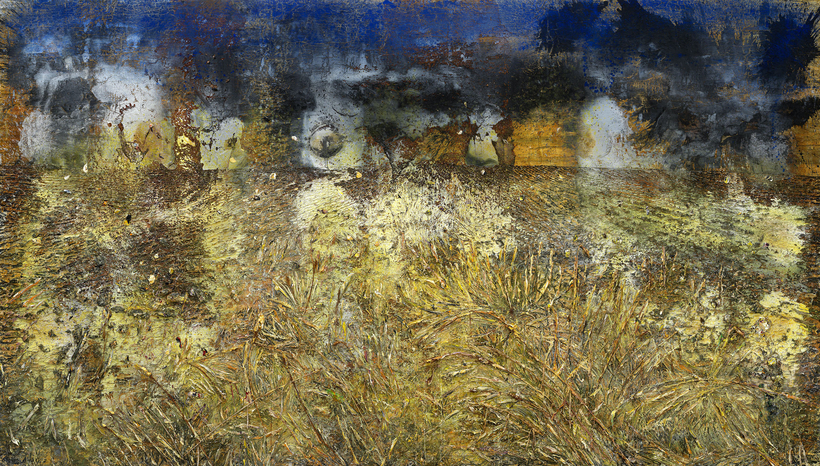One of the choice objects in last month’s Winter Show, New York’s lofty annual art and antiques fair, was an English “mourning ring with urn,” circa 1760–1780. It was a delicate thing, wrought from gold and silver, the urn enameled with white and trimmed with diamonds. The use of white enamel suggests that the person the ring is remembering was young. The ring expresses, the catalogue tells us, “the idea that love and friendship transcend death.”
But we do not escape it. Mourning jewelry is matter of fact about that. The term memento mori is Latin for “Remember you must die.” It refers to objects and symbols that remind us of death’s inevitability, such as a skull. Mourning pieces sometimes add the image of a crown over the skull, an emphasis that says, “Death is the master of all.” Before the discovery of antibiotics, people died at the drop of a hat and cultures were elaborate in their mourning—the Victorians in particular, not least because Queen Victoria so visibly and lengthily mourned the loss of her adored husband, Albert, wearing black for 40 years.

Made of precious materials—gold, diamond, ivory, pearl—mourning pieces were often treated like tiny reliquaries, fitted with the hair of the loved one, intricately plaited. They also employed lightless organic materials: a fossilized coal called jet; a black glass called French jet; vulcanite and gutta percha, which came from rubber trees; and onyx. Images of angels, urns, tombs, and weeping willows abounded. One thinks of lines from Tennyson’s poem In Memoriam: “Old Yew, which graspest at the stones / That name the under-lying dead, / Thy fibres net the dreamless head, / Thy roots are wrapt about the bones.”
In the 21st century, except for Goth and Punk—subcultures that embrace the living death of vampires—mourning dress cannot be borne for more than a day let alone years. And no one wants to be reminded that at some point they’ll croak. When weak leaders around the world turned their backs on the deadly coronavirus, huge swaths of humanity let them. Perhaps this is why the artists Anselm Kiefer and Berlinde de Bruyckere, both with new work on view in February and March, have made mortality their unwavering subject, the main show. His huge matted canvases, her flayed and petrified sculptures, these are memento mori on a monumental scale.
Artists Anselm Kiefer and Berlinde de Bruyckere have made mortality their unwavering subject, the main show.
In his review of a 2019 exhibition at White Cube Bermondsey in London, The Guardian’s Jonathan Jones wrote that Kiefer’s new paintings were “startling apocalyptic visions of a death-infected earth. They make the landscape so immediate, you almost feel twigs crunch underfoot.” That’s because there are twigs and sticks and old axes pressed into these paintings of winter fields. Lead, glass, charcoal, ash, dirt, cloth, even burned books are materials Kiefer has worked into his oils over the years. Considering this relentless darkness, Jones concluded that Kiefer is “still painting the Holocaust.” A German born in 1945, Kiefer faced the subject directly in the 1980s, in work inspired by Paul Celan’s poem “Death Fugue.”

Kiefer keeps returning to fields (bad things happen in fields). An exhibition in Austria last fall, titled after the Medieval song “Under the Linden,” took inspiration from the autumn ruin of fields in Barjac, France, a beauty, Kiefer said, that reminded him of Eros and Thanatos. In “Field of the Cloth of Gold”—a show of four paintings that opens on February 7 at Gagosian in Paris—Kiefer is thinking about a meeting 500 years ago, which took place in a field where King Henry VIII and King Francis I met to broker peace. Within a year they were at war. One of the paintings, From Hearts and Brains the Stalks of Night Are Sprouting, is a trampled field of smoldering gold straw, rusted scythes lifted like the battle flags of invisible reapers. “Thy fibres net the dreamless head.”

“Thy roots are wrapped about the bones.” The exhibition “Berlinde de Bruyckere: Engelenkeel” opens on March 2 at Bonnefanten Museum in Massstricht, Netherlands. De Bruyckere’s father was a butcher. She knows about corporeality—muscle, bone, cartilage, sinew, skin—and she has a way of making fallen tree trunks, piled animal pelts, bloodied rags, and wax figures look like remains in metaphysical transformation—both scientific and sainted.
Last year, asked to choose an image of comfort during the pandemic, de Bruyckere alighted on the Cristo morto sorretto da un angelo by Giorgione (circa 1502–1510), which shows the dead Christ supported by an angel. “The angel in the painting has wide, dark wings,” she said. “Warm wings that can cover the body and carry it away to a gentler place.” Its throat is pressed against the back of Christ’s neck. Is this what sparked the show’s title, which means “angel’s throat”? Is the throat as warm as the wings?
Laura Jacobs is AIR MAIL’s Arts Intel Report Editor
